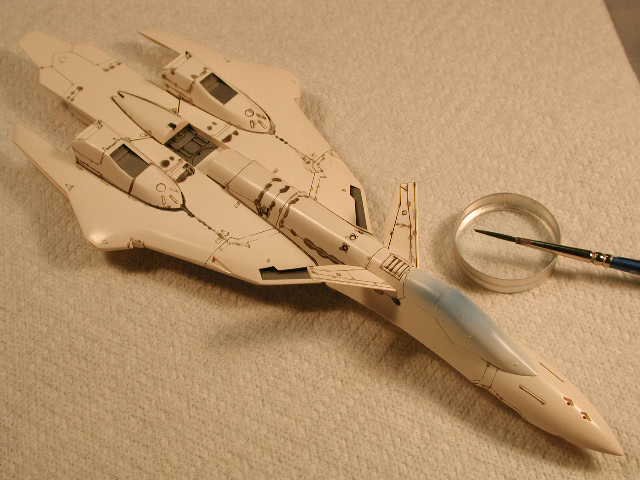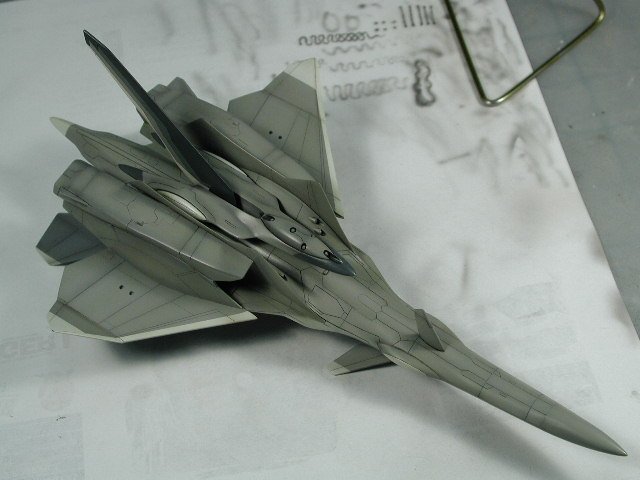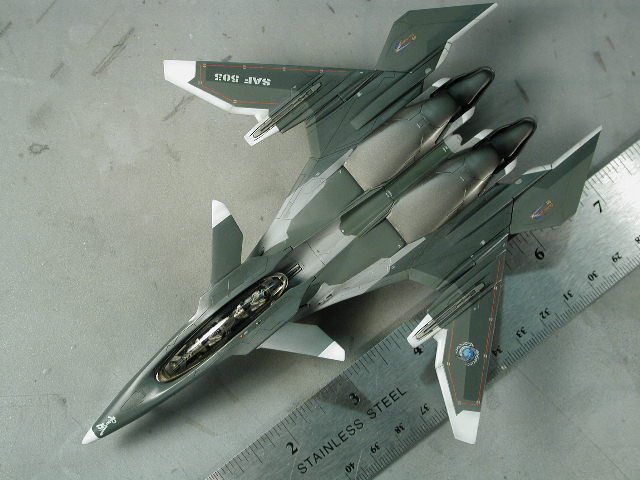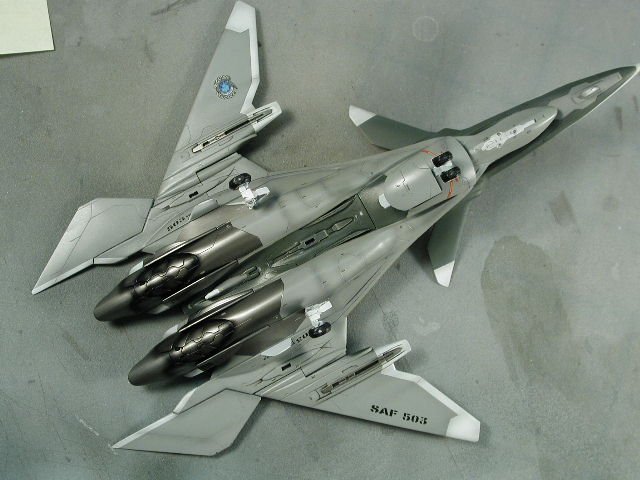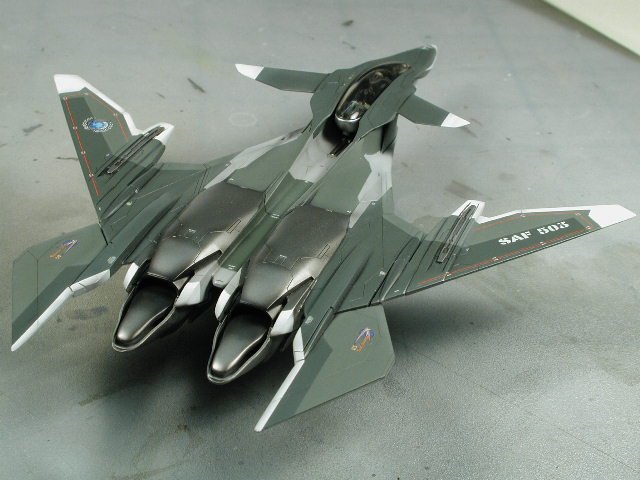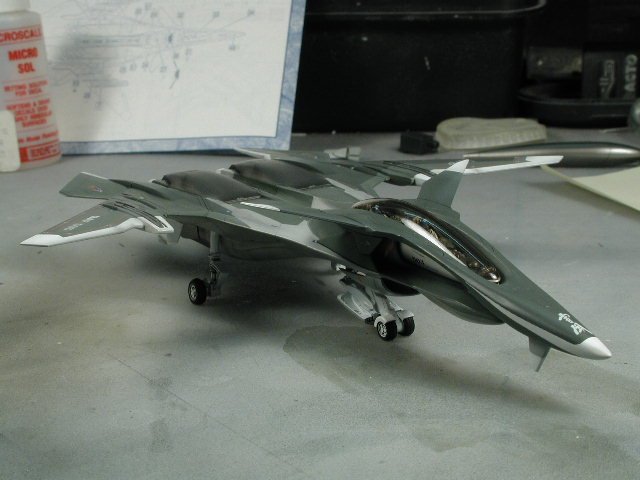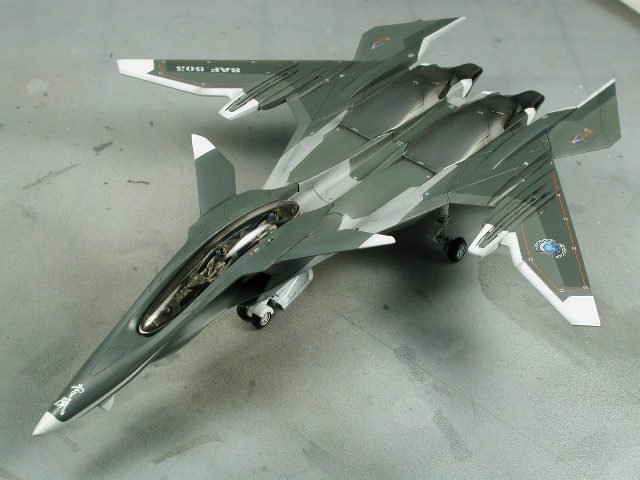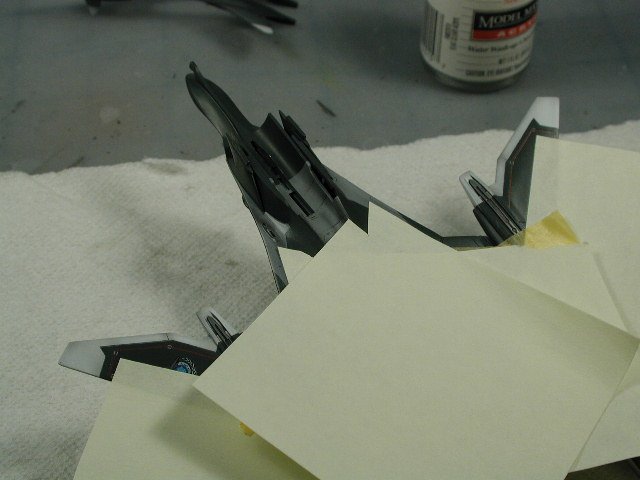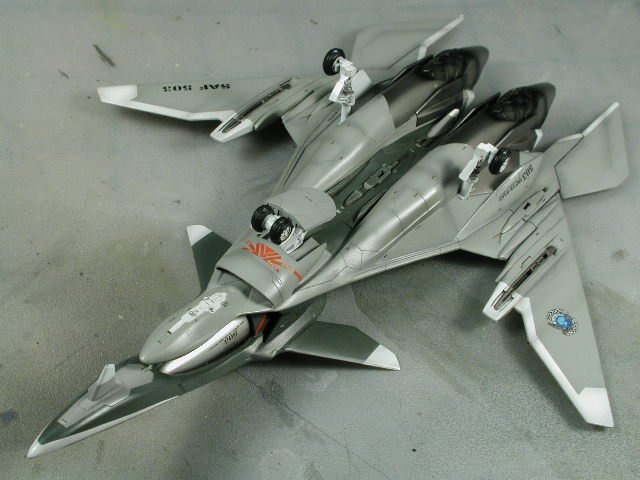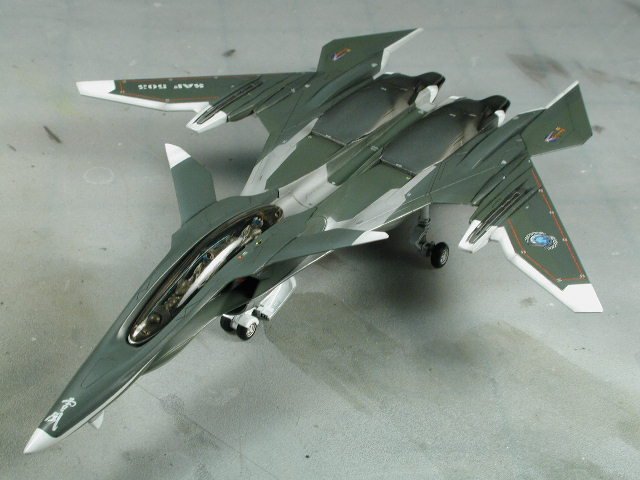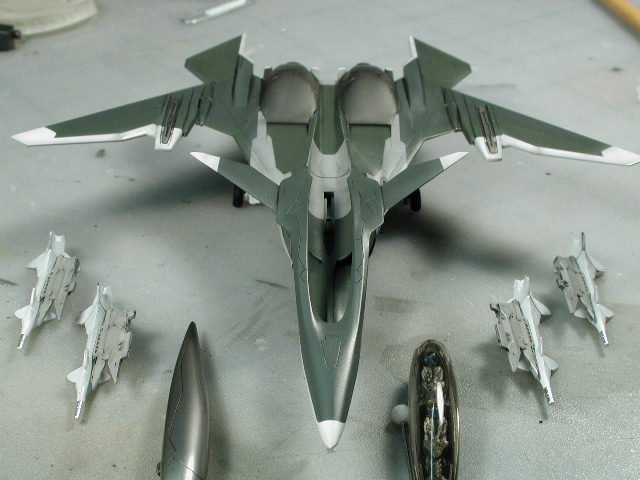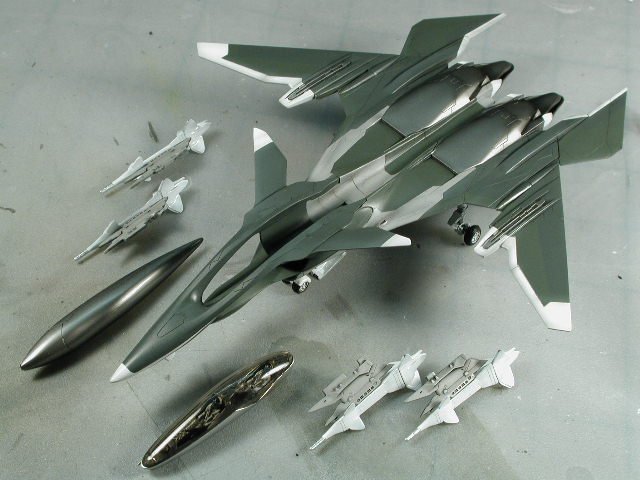-
Posts
4301 -
Joined
-
Last visited
Content Type
Profiles
Forums
Events
Gallery
Everything posted by wm cheng
-
Hye Lucifer, try this old thread: http://www.macrossworld.com/cgi-bin/mwf/ik...f=8;t=4555;st=0 scroll to page 2 about half way down, there's a bit on washing for the panel lines.
-
Hey good tips!! I'll try it on my next models, lots of MicroSET you say - hmm, maybe I haven't been putting enough or letting enough time for it to sit. I would warn about MicroSOL, its pretty powerful stuff and has ruined a few of my decals in the past. Good point about using it only where you need it to conform to a panel line or something - I also brush it around the edges to dessolve away some the the carrier film so it doesn't step up as much, more of a slope up. I do find that a smooth glossy surface does wonders for decals than a flat matte one - plus you can't really do an oil wash on flat paints anyways. Hey everybody, David, Grayson, Gerwalker, lets see some of your models!! Post pics!
-
Yes Grayson, its a higher thinner to paint than I would use normally to cover a model. You get a more viscous mixture - easier to control to make fine lines with - and you want it to be subtle more transparent. Just becareful you are not spraying thinner though - you want it to be fairly dry when it hits the model especially when you are an inch or two away - otherwise it may run, and you don't want run lines. Good Luck.
-
Hey guys, No sun yet, but I'll try for that family shot when it comes out, maybe Tuesday. Hey IIymij, maybe you could start a new thread and post pictures of your decals (closeups) so I can what the bubbles look like. The decal solvents and setting solutions are a bit tricky, I would only recommend after mastering regular decal placement do you move up to these, because they have ruined a few precious decals for me in the past. The solvents and setting solutions softens the decals so much so that they confirm to highly irregular surfaces, corners and panel lines, but in the process, they become extremely fragile to the point of "printed goo" as one modeller pointed out to me. Lets take a look at your decals first and see if we can solve it without the solvent and solution. There really is no need to use this stuff when you just want the decal to lie flat - and the Hasegawa decals are one of the best quality ones I have had the pleasure of working with, unlike old revel or monogram stuff. You should dip them in room temp water for about 6-8sec, then take out - they should easily slide off with a wet/damp brush. Put the decal with the decal paper backing on your model and nudge it off with a wet brush. Keep the model and decal wet at all times while you re-position the decal into the final position. Once its where you want it, take a damp cloth or paper towel (prefereably lintless) and dab gently at the decal to push any water and air bubbles out from underneath the decal. Then let dry Good Luck
-
Hey LTSO, Don't get discouraged. Try it on a piece of white paper or cardboard. Thin some light grey paint down (better on the brown side than blue - warm grey looks dirtier than cool greys) and play with your airbrush at different trigger flowrates and different air pressures. Grayson is exactly correct, the PSI affects the atomization of the paint so much. Play on the paper to get some lines and see how fine you can get it (also notice the size of the dots in the spray pattern). You don't have to do it to this VF-4 baby, but just try it out on a piece of paper. Usually, to get a really fine line, I hold it quite close to the model around an inch. You can see my piece of practice paper in the background - the lines should seem like a soft pencil - you shouldn't see any dots in it. Good luck - just practice and experiement
-
Its not the tool Cmd McBride - just practice, pressure and paint consistency (plus a clean head and needle - preferably one that is straight and true) Make sure the needle is not bent or have any debris stuck on it. Totally dissassemble the airbrush and clean every part again - make sure there is no debris. I've been using my crappy cheap Badger 150 single action for the last 15 years! and its great. Sometimes the more expensive ones can be a bit more complicated and clog up more frequently. I really recommend siphon feeds since you can use a cup or a bottle - the gravity feed ones have the reservior intergrated into the body of the airbrush - its small, will not cover a lot of area in one go, awkward for mixing, and you cannot spray inverted without the paint falling out or spilling onto the model.
-
HEy all, I would love to see some cool poses the 1/48 can get into - I thought I saw some pretty cool pictures a while ago, but I tried to do a search and came up with nothing. Sorry if this has been done - if so, could you direct me to a link to the old thread. If not, lets see your stuff!
-
Here's how I do it. I spray the entire tire in gloss white and let dry. Then I use the gundam black marker to trace around the hub/tire crease to get a straight line (sometimes if the crease is really small - I just let the wash pick it out). I then do a little wash to pick out the hub details which also fills in the crevice between the hub and tire. Then I use a flat black and brush paint the tire around - I don't have to get it perfect since the gundam marker line is sufficiently fat enough to give me a little lee-way so I paint the flat black a little away from the actual white hub, but make sure its on the gundam black marker line. Then I rub the flat black a bit with my fingers to get some finger grease on it - this makes the flat black look really rubber like in sheen. Good luck.
-
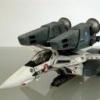
Any tips for brush painting with acrylics?
wm cheng replied to David Hingtgen's topic in The Workshop!
Hey Cmd McBride, I don't think Windex works for ModelMaster Acryls. They do have a specific thinner and a specific solvent for the Acryl line. Although I haven't used any of their "real" paints, the thinner works really well for the clear-coats - like the Tamiya thinner, there is some flow agent that makes the paint really viscous (it could be just a simple detergent to break the surface tension) but I don't know. However the Solvent, is really good a cleaning/flushing your airbrush out - they may be a bit expensive, but they really go a long way - I think it will last me years. -
Hey thanks for the kudos everyone. I am glad the flat thing restored the two grey/green tones - whew! that was a close one - and the post-it notes didn't even pull off a single decal! Well there's no sun today, so I'll try to finish off the missiles before I take any beauty shots of this new addition to the family. Thanks for all the great info on the missiles, I think I will follow it with a grey/blue shaft, white nose cone and silver fins - its a bit like the anime as well - I'll do a comprimise between the two styles. I'll do a yellow stripe for the live warhead, but maybe a red stripe instead of the brown to match the Yukikaze Superslyph's white missles with the red strips. we'll see. Yes Cmd. McBride, I almost use Tamiya acrylics exclusively now (too bad I had to mix all the custom colours). There are the minor exceptions of the ModelMaster clear-coats, and the Alclad metallizers. See you soon with some pics hopefully!
-
I see its a double action if I'm not mistaken (you press the trigger for air pressure and pull back for paint flow?) They are a little hard to master at first. I would invest in Tamiya thinner - I know its a bit expensive, but if you use Windex to clean the airbrush and only use the thinner to thin the paint then it will go a long way (mine has lasted me for over 4 years). You can thin Tamiya paints with water, but the thinner has some flow additives that aid in airbrushing, and might be able to help atomize the paint pegments while still inside the airbrush barrel producing a finer mist. 3:1 paint to thinner is a good ratio (I don't know if its the same with water though). You could try a little more thinner when doing the pre/post shading than you would normally to just cover the plane. I might try a higher PSI around 20-25 when I usually paint, unless the stuff specifies a lower PSI like metallics or heavier stuff like the Alclad. Try practicing on a piece of paper or card for a while first to get the hang of the line - you should be able to get a pretty smooth line that is 2-3 mm thick without problems, then practice to get a 1mm line around the thickness of a fat "B" pencil. Its just practice. I usually still practice on a piece of cardboard just before I spray on the model everytime to check paint consistency and get my hands into the practice. It's like warm-up whenever you play any sports
-
Wow, great work Kurt, I love those little weeds growing out of the tarmac!! Great product, I did a little search for them, and they have a carrier pattern, I'd love to set one of those underneath a Valk!! Thanks again for sharing great work!!
-
Hey there, Enamels are much harder/tougher paints, they wear pretty well. However, as Cmd McBride as mentioned they require a spirit based solvent (to clean but can be used straight out of the bottle to paint) which the vapours are unpleasant and requires ventilation to use. Additionally they require a bit longer to dry, 5-6 hrs for the glossy stuff or 3-4 hrs for the flat stuff. Generally they are more toxic. Acrylics are easier to handle paints, but they tend to scratch more easily. Acrylics also use thinners to clean but they are designed to be used straight out of the bottle to paint with. The thinners are usually some alcohol base and are not as toxic as spirit based solvents for the enamels. These paints do dry quicker, 3-4 hrs for glossy or 1-2 hours for flat depending on the thickness of the coat you apply. I would definitely recommend acyrlics especially to beginners since they can clean up with just water. However, that being said, after all my years in modelling, I use Tamiya Acylics almost exclusively now (after trying just about everything in the market). Good luck.
-
Hey LTSO, Great start - man I love this plane!! I can't wait to see more. Don't hesitate to start on anything just because I've built it - hey its posted to encourage people to try it or build it - please do what you want and I'll be watching Just an observation (don't take it the wrong way) but your grey lines seem a little coarse - like I can see the spray pattern or lots of little dots that make up your line. What type of airbrush do you have and what tip or spray pattern are you using? This could also be affected by the amount of pressure you are spraying with and the type of paint. You should get a fine line with no real visible dots - you should try to get a finer spray - the goal is to make it not look like its spray painted on. I also didn't get what you mean by dusting it after the white coat on top. Please don't worry about deviating from my techniques - they are just my trial and errors with my particular equipment - everybody has a different working style and haddicap (mine is that I suck at hand painting - I can't get rid of the brush marks) so I airbrush everything. But I want to learn from everyone here too - so please feel free to experiement so we can all learn!!
-
In these pictures you might forget how small this model kit really is. It makes the Hasegawa Valkyries roomy by comparison. I'll wait till tomorrow when there is sun in my dining room to take some proper pictures of this new baby. I still haven't got a real clue on how to paint the missiles - any suggestions other than the instructions pale purple would be helpful. Till tomorrow...
-
-
A rear view - its intersting how the flat pieces catch the light, in darkness or a darker environment, the two grey/green colours are still very close, but in bright light, you really see the contrast. In fact it makes the metallic steel look even more glossy. What do you guys think of this grey/green version instead of the bluish one in the Model Graphix and the instructions?
-
-
Viola!! It turned out really well If I may say so myself I am so happy, I really was upset when after all that careful masking, the colour blended so much with the darker grey when I clear-coated the entire thing semi-gloss. In fact, I like it better now, where some parts of the plane is semi-gloss and some parts are flat - it gives an intersting sheen to the aircraft (especially when you walk around it) - especially where I chose to break the flat/semi finish at the panel lines. It makes it look more assembled from separate pieces and a sense of scale - sort of like the Enterprise A in the Star Trek movies with their subtle off-white panels.
-
I couldn't wait any further, 2 hours after my last semi-gloss clear coat, I started to try the flat-coat idea to bring back the lighter green-grey colour. Here is my "hair-brained" idea with the post-it notes. It didn't pull any decals off this time around, in fact, it kept falling off, and I had to re-adjust and apply the post-it notes before each time I spray the flat/matte finish clear-coat.
-
Here's the underside. The decals for the forward sensor area (the little irregular white patch) really do make that area pop out - I'm glad that I spent the time to mask that irregular shape out - I think it would be worth it. In the end, I am going to but dabs of blue transparent colour into the camera lens openings. The decals for this area came as three sections of little stencils, all held together with decal film. I again trimed this off and applied each stencil separately - if you leave the film on, I am afraid it would cover some neat details and a camera lens or two. (I'll do a shot close-up of this when I finish it off with the camera lenses - I also painted the lens housing in a silver). At this resolution it doesn't look like much, but all those little black smudges are separate stencils!! I'll let you know how the flat-coat goes in a little while!
-
A brief update while I let my clear-coat dry. Wow... holy micro decals Batman!! I think I need a few seconds to let my crossed eyes adjust!! Well, after the decals on the last Bandai kit (Yukikaze Superslyph) were generally oversized (more like 1/72 than 1/100) well, they more than made up for it on this kit. These are tiny, in fact most of all the warning stencils were so small that they turned to be little blurs or smudges. As insane as it was, I spent the better part of the day applying all these little smudges - you may not be as crazy as this, and still the kit would be pretty much unchanged <_< Oh, well too much time on my hands. I did cut out all the decal film between the red walkway lines on the wings - it was just too much film to hide. However, when you did this, you are left with a "U" shaped red stripe that was extremely difficult to get laid down in the proper geometry. I spent a good 1/2 hour on each of these red lines and a lot of water to keep them moist while I fiddled with one section or the other. But I believe the end result is worth it, a huge decal that were to cover most of the wing would have been easy to put on, but looked pretty bad in the areas between the red lines especially if the text and round emblem was to go on top of that too. What killed my eyes were trying to trim around the excess decal film around all the little stencils - but if you don't you'll end up with blobs of decal film around all these little smudges which is worst! Because the decals were so small or fragile, I applied them with water, brushed them into position with a damp brush, then dried the brush to "wick" out the excess water, and dabbed MicroSol setting/solvent solution on the edges once they were in position to help hide the decal film edges.
-
Hey guys - I'm back, Took a break to go to Wonderland because it was such a nice day yesterday - Man was it crowded!! Back to decalling today - hopefully I'll post some pictures today. Just got a brain-wave last night - I plan on masking after the decals to do some shades of flat clear-coat on this bird to bring back the lighter green-grey - but I was cautions because the last time I masked after I applied the decals was my Elintseeker's radome (those of you who follow or care remembers what a nightmare that became when I pulled of chunks of decal). I thought I would clear-coat the decals, then use Post-it notes - the sticky back is much less - well see how it goes. I get my Future at a supermarket, Loblaws was the last time I checked - in the floor cleaning aisle. For those of you in the GTA, I saw a bunch of Future on sale up in Scarborough at Bamburgh Circle in the Chinese supermarket at Steeles and Warden on Saturday. Thanks Cmd McBride for the nose white markings comments, I feel a little better about them now. When you build these things and put such effort into them - you are never happy of how it turns out - there are things I wished I did differently on each and every one of my models. Its part of what gives me the drive to continue builidng models - the promise that I will not do that particular mistake again on the next one! Again for those of you in the GTA, Northstar Hobbies in the west end carries Tamiya masking tape as well as Collector's Lane Hobbies in the east end. I have started to see them poping up in local Anime stores such as Pacific Hobbies in the Pacific Center. Lastly, the post shading. I used a neutral grey this time - since its a shade lighter than the underbelly sky grey. I always use a shade darker than the base coat I want to post-shade over. I dilute in with Tamiya thinner more than usual 2:1 paint:thinner to get a very viscous consistency. This helps to not lay down a lot of paint and allows the airbrush to achieve a finer line. Then I very lightly (key here is build up in layers - SUBTLETY - error on the light side - its always easier to add then fix if you put too much) airbrush as fine of a line as I can - "tracing" around all the panel lines and any contours I want to highlight. Its kind of like shading a 3-d sculpture and its a bit of taste to determine where you want it and where you don't. Since this is a relatively new aircraft, I did it very lightly. I find when you over postshade stuff, it looks more anime like kind of like the Gundams we see everywhere. Once you are complete - immediately seal it in with a clear-coat. This post-shading layer is very delicate, since its such a light misting, it can scratch off easily. Hope to post soon. Good luck!
-
-
The weathering on the top is really subtle - I didn't want it to look battle-worn, just tie all the colours in a bit (the photo doesn't really show subtelty well). There will be another light dusting of grey after the decals to tie those in - so its always best to error on the side of caution. You can always add more, over-doing it is a harder fix. This photo shows the other missiles (I decided to paint the bodies/shaft white - like the Superslyph, but haven't decided on a fin colour yet - I don't think I'll take the instructions pale purple) the centerline tank (which there are no paint instructions - but I did the Alclad Steel because I like the finish so much - in hindsight, this will be my Alclad test model ) and off-course the cockpit pod.

